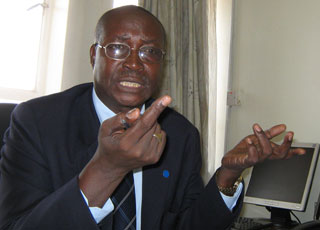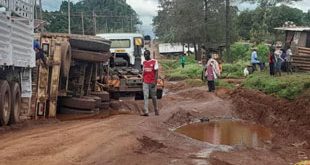
By Patrick Kagenda
The Independent’s Patrick Kagenda talked to the minister of State for Energy, Eng. Simon D`ujanga about the power sector and Umeme’s announcing major increases in connection fees.
What is the future of the Karuma power project after Nopak pulled out? Is it likely to become a white elephant like the second Naluubale power project?
What we are now going to do is drill further underground and increase the head flow so that we can get more power from that site.
How soon can we expect this power on the national grid?
The lifecycle of power to come on the national grid is five years so if you count from now, we should talk of 2014. But we think that earlier than that we should start commissioning some of the machines because it’s a big project.
You are increasing power generation, how about the infrastructure to transmit it?
We have also conceived three lines; one from Karuma to Lira to connect to the existing system to serve the eastern part of the country. We have a line from there to Oluio to serve the northern part of the country and possibly southern Sudan, and then we have a line from there up to Kawanda to serve central and western parts of the country. So the power must be evacuated from there.
How about the Bujagali power line which has to pass through highly populated areas?
The Bujagali line is already compensated now. From Bujjagaali we are taking a line up to Kawanda. Even this line from Karuma is coming to meet with the one from Bujagali. The Wayleaves issues have already been settled for that line from Bujagali. People have been compensated and we will try to do as best as we can to avoid densely populated areas but all the people concerned, what we call the Settlement Action Plan has been done.
What is happening to the fuel reserves? Are you waiting for another crisis to tell us you are working on them?
When discussing fuel reserves of 30 million litres – which hardly takes us 10 days – first look at the bigger thing. I don t know if it will be important to have fuel reserves in form of tanks because if you have oil fields you can leave your oil in the ground. But the reserve for the finished product in Jinja, that has been turned into part of the operational reserve because we are building a pipeline from Eldoret to Jinja to Kampala to Mbarara to Kigali to Bujumbura. We have handed over land to the developer at Kyengera to build a bigger reserve. We have sent our team to Nakasongola to look at the other reserves. So I will not dwell on the reserve of Jinja of 30 million litres of fuel.
How soon are we getting these reserves?
May be, towards the end of next year. And there is nothing else we can do because building them will take that long.
Umeme reports a 40% loss of power through the archaic equipment. What plans are there to overhaul this equipment?
Most of that 40% loss is theft. The one due to old cables is a very small percentage. The minds of our people should be turned away from condoning theft. If your neighbour steals electricity and you do not report him, you are paying for his electricity. The power thieves are the ones raising the power tariff.
Umeme is asking for tariff increments, what will this mean to the user?
Umeme is not asking for user tariff increase. Umeme has made an application to ERA (Electricity Regulatory Authority) for an increase in the installation cost, increase in the fine for theft, increase in the penalty for bounced cheques, and increase in security deposits. The concession agreement allows Umeme to make these applications and then ERA evaluates them. Remember, since Umeme came, these things I have mentioned, have not been increased. They have been maintaining UEB old rates.
What new thing has Umeme brought that UEB could not achieve if it was well funded?
Umeme has brought capital; old transformers have been replaced, old poles have been replaced especially in Kampala city. That’s why our demand over passed production. With more hydro and thermo power coming we will see cost coming down.
There is disagreement on the oil refinery set up between government and the prospective investors. What is the cause of this disagreement?
There has been no disagreement on the funding. We are discussing. First of all the size of the refinery; we were thinking of a refinery of 4,000 barrels of oil per day but now from the oil we have found we are talking of 150,000 barrels of oil per day. We are now saying instead of spending money on a small refinery, why don’t we go for a bigger thing? Don’t forget it’s not only Tullow in those places; there is Neptune, there are other companies prospecting. With Tullow, we are discussing training of personnel, financing, because government and those companies should come together in order to build these refineries; infrastructure, we want roads from Hoima to Kaiso Tonya and another road from there to Butiaba; power generation, now instead of using only water we are now going to use the residues from the oils and before we were only conceiving only 80 Megawatts but now from the quantity of oil which is there we are now thinking of 200 megawatts or more. We are also discussing environmental management. We have not disagreed, we are negotiating. Who brings most of the money? Our prospecting companies may not be very experienced in refinery but we must be sure that we get the right type of equipment for the refinery. So these are natural phases of negotiation.
 The Independent Uganda: You get the Truth we Pay the Price
The Independent Uganda: You get the Truth we Pay the Price


